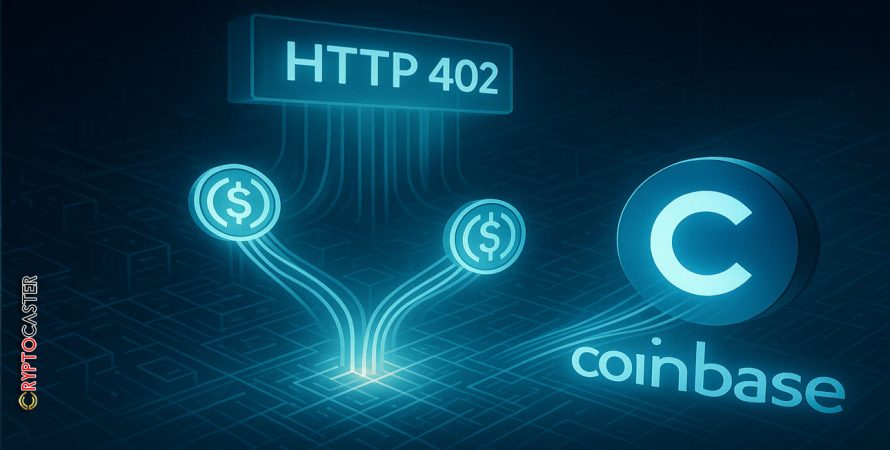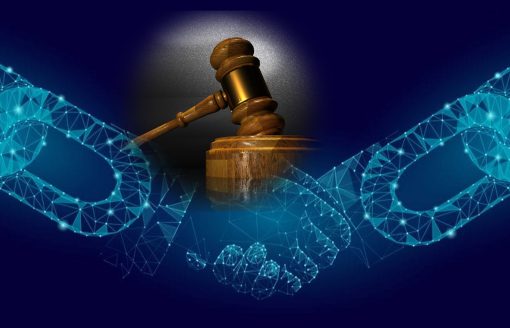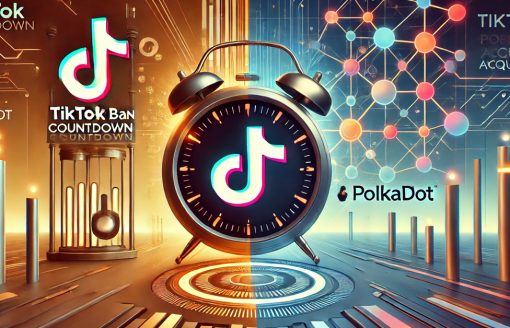By CryptoCaster Editorial Desk | November 1, 2025
A Quiet Revolution in the Internet’s Codebase
When the creators of the web drafted the HTTP standard in 1992, they reserved status code 402 — Payment Required — for a future that never arrived.
Now, over thirty years later, Coinbase has decided to bring that future online.
Stay in the know on crypto by frequently visiting Crypto News Today
The company’s new x402 protocol aims to make stablecoin payments as native to the web as file transfers and data requests.
Instead of a “card on file,” sites and services can simply return an HTTP 402 response to request payment. A user, wallet, or even an AI agent can automatically reply with a signed stablecoin transaction — settled instantly on-chain.
CryptoCaster Quick Check:
The Vision: Pay-Per-Action, Not Paywall Friction
Coinbase describes x402 as an “internet-native payments layer,” enabling micro-transactions that feel as seamless as clicking a link.
The protocol could power:
- pay-per-API call models for developers,
- machine-to-machine commerce (IoT + AI agents),
- micro-subscriptions for content,
- and one-time data or compute purchases by autonomous systems.
The company’s launch materials link x402 directly to Agentic Commerce — the emerging web of self-operating AI agents that can consume services, negotiate prices, and settle in stablecoins without human prompts.
Why Stablecoins Are the Key
Stablecoins, especially USDC, are central to Coinbase’s vision. They combine blockchain transparency with dollar-denominated stability, making them ideal for real-time settlement.
By embedding USDC into HTTP itself, Coinbase effectively turns the browser into a universal wallet — a leap toward programmable money that web services can natively understand.
Partners such as Circle, NEAR Protocol, and AWS have signaled alignment with the x402 initiative. Developer documentation and a formal white paper at x402.org outline the specification and open standardization roadmap.
Technical Elegance and Economic Implications
x402 uses standard web headers to carry payment requests and receipts, allowing any HTTP-capable service to integrate without rewriting its stack.
If adopted widely, the protocol could:
- Create a new layer of monetized APIs, replacing rate-limits with pay-per-call logic.
- Reduce dependency on credit-card networks and subscription middlemen.
- Increase on-chain demand for Ethereum gas and Base network throughput, indirectly benefiting Coinbase’s ecosystem.
Analysts at 21Shares called x402 “a stealth catalyst for Ethereum demand,” framing it as the HTTP moment for crypto.
Challenges: Adoption, Regulation, and Trust
Like every protocol upgrade, success depends on adoption. Developers must implement wallets that can handle automatic 402-responses securely.
Regulators may scrutinize automated payments between non-KYC’d agents, while enterprises will need audit trails and consumer protections.
Still, Coinbase’s move aligns with global momentum toward digital-value interconnectivity — an internet where value moves at the speed of information.
The Strategic Layer
For Coinbase, x402 strengthens its position as both an exchange and an infrastructure company. It extends the reach of Base, its layer-2 network, and places USDC deeper into the architecture of everyday commerce.
If x402 becomes the standard for web payments, Coinbase’s brand could become synonymous not only with trading crypto — but with how money flows online.
Outlook: The Internet’s Missing Payment Code Lives Again
The resurrection of HTTP 402 may read like a minor developer story, but it carries profound implications.
If HTTP 401 defined authentication, and HTTPS defined security, x402 could define value itself — an Internet where every API, every AI agent, and every user can transact natively, securely, and at scale.
In the quiet syntax of a status code, Coinbase has re-opened the door to the long-promised internet of money.
If this article brought you clarity, insight, or value—support the work that made it possible.
At CryptoCaster, we report on Web3, crypto markets, and institutional finance with no billionaire owners, no shareholders, and no hidden agenda. While mainstream media bends toward Elon Musk, BlackRock, and JPMorgan narratives, we stay focused on what matters: truth, transparency, and the public interest.
We don’t just cover the headlines—we investigate the power structures behind them. From FTX and Ripple to the quiet push for CBDCs, we bring fearless reporting that isn’t filtered by corporate interests.
CryptoCaster is 100% paywall-free. Always has been. To keep it that way, we depend on readers like you.
If you believe independent crypto journalism matters, please contribute—starting at just $1 in Bitcoin or Ether. Wallet addresses are below.
Your support keeps us free, bold, and accountable to no one but you.
Thank you,
Kristin Steinbeck
Editor, CryptoCaster
Support CryptoCaster: The Unfolding of Money
At CryptoCaster.world, we’re dedicated to bold journalism, sharp insights, and fearless commentary across blockchain, Web3, and crypto markets. Your **Bitcoin contributions** help us stay independent and continue delivering signal over noise.
🚨 CryptoCaster does not offer investment advice. Always DYOR—volatility is real, and risk tolerance matters.
Support our mission. Contribute BTC today.
🔗 Bitcoin Address:
3NM7AAdxxaJ7jUhZ2nyfgcheWkrquvCzRm
Thank you for backing our journalistic lens as we chronicle the Unfolding of Money — a saga still being written in real time.![]()
CRYPTOCASTER HEATMAP








